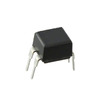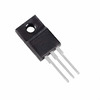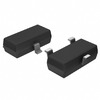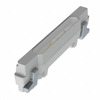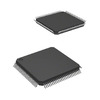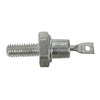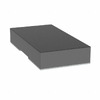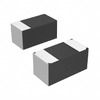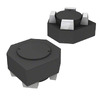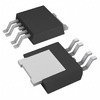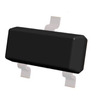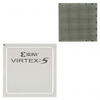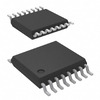BMP280 vs. BME280: Comparing Two Popular Atmospheric Sensors
In the world of environmental sensors, the BME280 and BMP280 by Bosch stand out for their distinct capabilities and targeted applications. While the BME280 provides a comprehensive solution with temperature, humidity, and pressure measurement, ideal for in-depth environmental monitoring, the BMP280 focuses on temperature and pressure alone, making it a reliable and cost-effective option for altitude and basic weather tracking. These sensors have earned popularity across personal, industrial, and technological domains, but distinguishing between them can be useful for accurate project outcomes. This article dives into their technical specifics, integration tips, and applications to help you select and utilize the right sensor for your needs.Catalog

BMP280 Sensor Overview
The BMP280 sensor is adept at measuring atmospheric pressure and temperature, proving invaluable in contexts where these measurements significantly affect results. Unlike the BME280, it focuses exclusively on these areas, sidestepping humidity metrics to hone in on its strengths. With a compact design and efficient energy use, it's ideal for devices dependent on battery power, such as wearable tech, GPS units, and smartphones. This capability aligns well with longer battery life demands, reflecting strides in portable tech innovation.
Supporting both SPI and I2C interfaces, the BMP280 allows flexible integration into various electronic systems. It serves an accurate altimeter function, enhancing precise elevation determinations. In altimetry, the need for sensitivity and accuracy is dominant because elevation data is active for navigation and geographical positioning, showcasing the sensor's adeptness at marrying power efficiency with precision—an appealing aspect in present-day electronics driven by sustainable energy practices.
BME280 Sensor Overview
The BME280 sensor is skilled at measuring humidity, temperature, and barometric pressure, offering outputs marked by precision and stability. This sensor’s linear response supports accurate environmental tracking, a sought-after feature in areas like meteorology and environmental monitoring. Harnessing its accuracy, you can deploy it effectively in applications demanding consistent data over extended periods. It shines in scenarios where resistance to electromagnetic interference is highly valued.
The adaptability of the BME280 allows it to thrive in diverse environments. It serves a role in smart home devices for monitoring indoor climate conditions and operates in advanced weather stations. In agricultural contexts, it facilitates precision farming by enabling the optimization of irrigation schedules informed by humidity and temperature readings. Its extensive applicability shows its dependability.
Incorporating the BME280 into different systems requires attention to factors like power consumption and data accuracy. You can craft circuits and algorithms that capitalize on the sensor’s advantages while limiting resource expenditure. Successful deployments have demonstrated that, with proper calibration, the sensor maintains reliable performance over the years, easing the demand for frequent recalibrations
Pinout Configurations
BMP280 Pinout
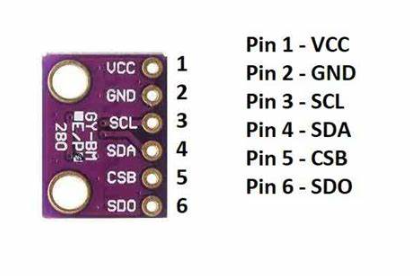
|
Pin No. |
Pin Name |
Pin Description |
|
1 |
VCC |
This is the power pin. Connect 3.3V DC supply at this
pin. |
|
2 |
GND |
Ground pin |
|
3 |
SCL |
This is the serial clock pin for the I2C interface. |
|
4 |
SDA |
This is the serial data pin for the I2C interface. |
|
5 |
CSB |
The chip select pin selects the I2C or SPI interface. It
selects the SPI interface when provided with a low signal or grounded. On
applying a HIGH signal of 3.3V, this pin will select the I2C interface. |
|
6 |
SDO |
It is the serial data output pin that sends out the
output value. |
BME280 Pinout

|
Pin Number |
Pin Name |
Pin Description |
|
1 |
GND |
Ground |
|
2 |
CSB |
Chip Select |
|
3 |
SDI |
Serial Data Interface |
|
4 |
SCK |
Serial Clock Interface |
|
5 |
SDO |
Serial Data Output |
|
6 |
VDDIO |
Digital/Interface Supply |
|
7 |
GND |
Ground |
|
8 |
VDD |
Analog Supply |
Technical Specification
|
Specification |
BME280 |
BMP280 |
|
Measures |
Air pressure, temperature, humidity |
Air pressure, temperature |
|
Supply Voltage |
1.7 to 3.6V (chip), 3.3 to 5V (board) |
1.7 to 3.6V (chip), 3.3 to 5V (board) |
|
Temperature Range |
-40 to 85ºC |
-40 to 85ºC |
|
Weight (G.W) |
10g |
3g |
|
Accuracy of Air Pressure |
±1.0 hPa |
±1.0 hPa |
|
Range of Air Pressure |
300 – 1100 hPa |
300 – 1100 hPa |
|
Dimensions |
40mm x 20mm x 15mm |
20mm x 40mm |
|
Current Consumption |
0.4 mA |
0.6 mA |
|
Accuracy of Temperature |
±1 |
±1 |
Applications of BMP280 vs BME280
BMP280 Applications
The BMP280 sensor finds its place in a multitude of fields, contributing to precise weather prediction, advanced fitness tracking, home automation systems, both indoor and outdoor navigation, and healthcare innovations like spirometry. Its compatibility with SPI and I2C interfaces enhances GPS navigation, offering intricate slope detection and precise vertical velocity measurements. In practice, the sensor's reliability fosters the creation of intuitive devices that adjust to environmental changes across different altitudes, showcasing its value in contemporary engineering solutions.
BME280 Applications
The BME280 sensor is utilized in areas such as fitness tracking, home automation, accurate weather forecasting, and navigation systems. It excels in delivering atmospheric pressure readings, alongside temperature and humidity data, becoming a favored choice for projects that demand comprehensive environmental insights. Actual usage reveals its capability in developing systems that enhance functionality based on thorough climate analysis. This application broadens the potential for innovations that emphasize your experience and adaptability.
Sensor Manufacturer
Bosch Sensortec GmbH, a completely owned division of Robert Bosch GmbH, focuses on designing and manufacturing micro-electro-mechanical systems (MEMS) sensors. These sensors weave themselves into the fabric of today's consumer electronics, touching everything from smartphones and tablets to wearable technology and diverse Internet of Things (IoT) products.
MEMS sensors have a unique role in enhancing your experiences with smartphones and tablets. They enable functionalities like screen rotation, gesture recognition, and camera stabilization. Fitness trackers and smartwatches depend greatly on MEMS sensors to observe physical activities, monitor health metrics, and sense environmental changes.
With the ever-growing presence of IoT products, MEMS sensors have found a welcoming home. They allow for effortless interaction within intelligent environments by facilitating data collection and communication among interconnected devices.
PCB Insights into BMP280 vs BME280
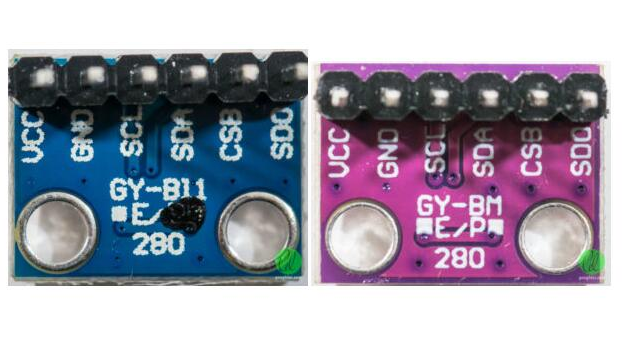
Digging into the PCB layouts of BMP280 and BME280 reveals notable design resemblances. The BME280 typically features a purple PCB, while the BMP280 can often be recognized by a distinctive black dot on the module's left side. Such subtle identifiers may seem trivial, yet they highlight how detailed attention can prevent misidentifications among suppliers and sellers. These mix-ups often arise due to shared dimensions and layouts.
The impact of misidentifying sensors transcends beyond minor transactional issues, mostly in precision-focused applications. Consider environmental monitoring systems; an incorrect sensor choice risks faulty data collection and subsequent analysis. Therefore, accurate identification is active for sustaining data integrity and optimizing system performance.
Integration of the BME280 with Arduino
The Grove-BME280 environmental sensor is celebrated for its precise sensing abilities and offers an excellent interface with microcontrollers like Arduino through SPI or I2C protocols. When effectively integrated, it provides comprehensive monitoring of environmental factors, such as humidity, altitude, pressure, and temperature.
Linking the BME280 Sensor to Arduino
To efficiently connect the BME280 sensor to an Arduino, leveraging the Grove Base Shield ensures stable communication via the I2C port. This method not only streamlines the connection process, simplifying interactions but also fortifies data transmission between the sensor and the microcontroller, paving the way for consistent communication.
Installing Libraries and Uploading Code
To proceed with this integration, acquiring and installing the required library code is a must. Exploring repositories like GitHub allows easy access to required software components. Following the download, uploading the code to the Arduino platform establishes preliminary communication with the sensor, configuring it to deliver precise environmental data.
Monitoring Operations and Using Data
Executing the uploaded code facilitates the monitoring of environmental metrics. Each parameter—humidity, altitude, pressure, or temperature—unveils intriguing insights about the environment. This pragmatic use of data finds applications across various fields, from meteorology to agricultural planning. Additionally, setting up alert systems based on these parameters can be especially beneficial for proactive environmental management.
Equivalents of BME280
• BME180
• BMP280
• HTU21D
Conclusion
Understanding the differences between the BME280 and BMP280 sensors is a must for successful project implementation, as each sensor offers unique benefits suited to specific applications. By carefully examining sensor specifications and using appropriate libraries, you can streamline integration and avoid performance issues. Moreover, sourcing from reputable sellers and verifying sensor specifications can help mitigate common purchase frustrations. Whether for personal projects or advanced environmental monitoring systems, choosing the right sensor is initial to achieving accurate and reliable results in any setting.
Datasheet PDF
BMP280 Datasheets:
BME280 Datasheets:
About us
ALLELCO LIMITED
Read more
Quick inquiry
Please send an inquiry, we will respond immediately.
Frequently Asked Questions [FAQ]
1. What is BMP280?
The BMP280 shines in mobile settings, thanks to its compact design and efficient energy usage. Its presence enhances smartphones and GPS modules, showcasing its adaptability in modern tech. The constant evolution of wearable technology continually finds new ways to integrate these sensors, providing you with a more immersive experience.
2. What is bme280?
Tailored for wearables and mobile devices, the BME280 is noted for its remarkable precision and consistency. Its long-lasting stability and superior EMC resilience make it a valuable asset in the fast-paced tech world. Its widespread use in smart devices emphasizes a focus on maintaining high performance.
3. How does bme280 work?
The BME280 efficiently measures pressure, temperature, and humidity. It also estimates altitude by analyzing pressure differences. By utilizing I2C or SPI interfaces, it integrates smoothly with microcontrollers, ensuring effective data communication. This versatility highlights a growing need for comprehensive monitoring systems across various domains.
4. What are i2c sensors?
The I2C bus system provides a straightforward, flexible communication method between electronic devices. It simplifies connecting components, encouraging innovation in modular design and improving system efficiency. These digital frameworks enhance coordination and expandability in complex technological solutions.
5. How Does a Barometric Sensor Work? How Do I Connect My BMP180 to Arduino?
An aneroid barometer consists of a sensitive cell that reacts to changes in pressure by expanding and contracting, which activates levers to magnify this movement. This process converts mechanical shifts into accurate readings on the display, offering insights into atmospheric variations. These sensors find use in situations that demand precise environmental monitoring.
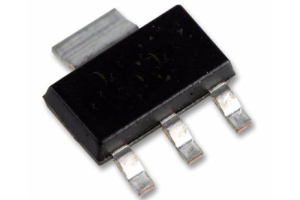
A Guide to the LD1117S50TR: Specifications, Applications, and Datasheet
on November 3th
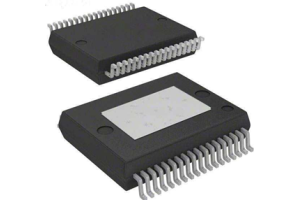
Understanding the TDA7492 Amplifier: Pin Configuration, Datasheet Insights, and Block Diagram
on November 3th
Popular Posts
-

What is GND in the circuit?
on January 1th 2933
-

RJ-45 Connector Guide: RJ-45 Connector Color Codes, Wiring Schemes, R-J45 Applications, RJ-45 Datasheets
on January 1th 2485
-

Fiber Connector Types: SC Vs LC And LC Vs MTP
on January 1th 2077
-

Understanding Power Supply Voltages in Electronics VCC, VDD, VEE, VSS, and GND
on November 8th 1871
-

Comparison Between DB9 and RS232
on January 1th 1758
-

What Is An LR44 Battery?
Electricity, that ubiquitous force, quietly permeates every aspect of our daily lives, from trivial gadgets to life-threatening medical equipment, it plays a silent role. However, truly grasping this energy, especially how to store and efficiently output it, is no easy task. It is against this background that this article will focus on a type of coin cell battery that may seem insignificant on the...on January 1th 1707
-

Understanding the Fundamentals:Inductance Resistance, andCapacitance
In the intricate dance of electrical engineering, a trio of fundamental elements takes center stage: inductance, resistance, and capacitance. Each bears unique traits that dictate the dynamic rhythms of electronic circuits. Here, we embark on a journey to decipher the complexities of these components, to uncover their distinct roles and practical uses within the vast electrical orchestra. Inductan...on January 1th 1649
-

CR2430 Battery Comprehensive Guide: Specifications, Applications and Comparison to CR2032 Batteries
What is CR2430 battery ?Benefits of CR2430 BatteriesNormCR2430 Battery ApplicationsCR2430 EquivalentCR2430 VS CR2032Battery CR2430 SizeWhat to look for when buying the CR2430 and equivalentsData Sheet PDFFrequently Asked Questions Batteries are the heart of small electronic devices. Among the many types available, coin cells play a crucial role, commonly found in calculators, remote controls, and ...on January 1th 1536
-

What Is RF and Why Do We Use It?
Radio Frequency (RF) technology is a key part of modern wireless communication, enabling data transmission over long distances without physical connections. This article delves into the basics of RF, explaining how electromagnetic radiation (EMR) makes RF communication possible. We will explore the principles of EMR, the creation and control of RF signals, and their wide-ranging uses. The article ...on January 1th 1530
-

CR2450 vs CR2032: Can The Battery Be Used Instead?
Lithium manganese batteries do have some similarities with other lithium batteries. High energy density and long service life are the characteristics they have in common. This kind of battery has won the trust and favor of many consumers because of its unique safety. Expensive tech gadgets? Small appliances in our homes? Look around and you'll see them everywhere. Among these many lithium-manganes...on January 1th 1500
